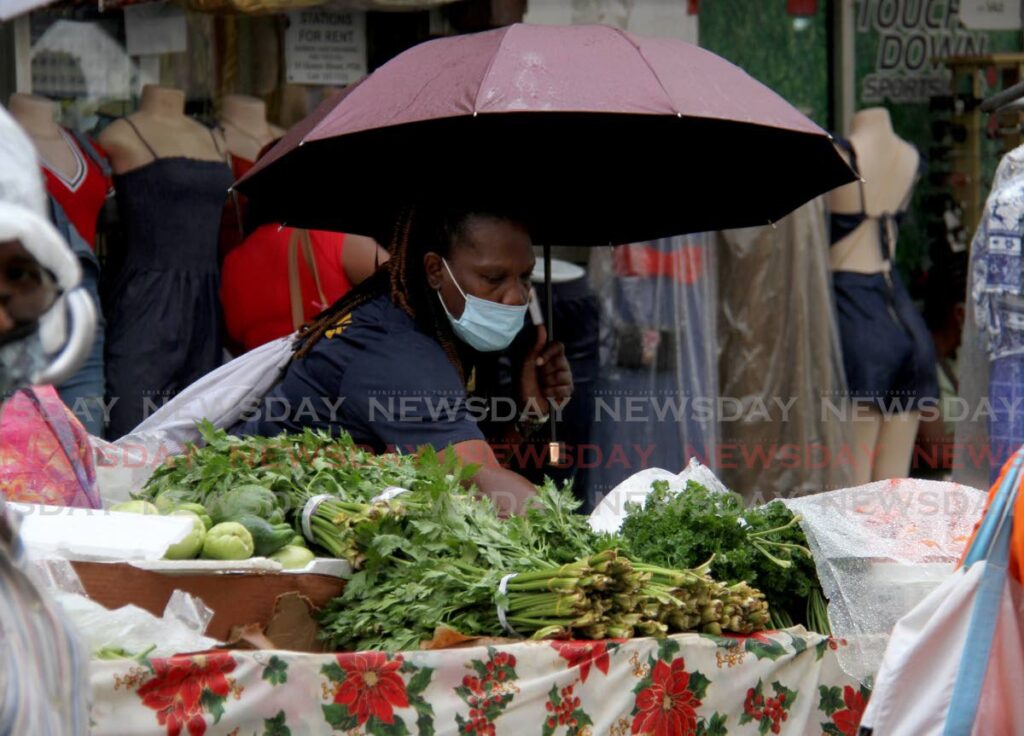Charlotte Street vendors explain rising produce costs

A Sangre Grande vendor is painfully aware of increasing food prices, but is looking at the bigger picture. He does not believe the rising costs of goods is unique to Trinidad and Tobago.
He waxed philosophical on Tuesday.
"I feel is global, inno, I ain't feel is we alone. Because we not in Russia, and Russia is the same thing like we. We suffering, Russia suffering, Guyana suffering, everybody suffering."
The vendor, who asked not to be named, sells on Charlotte Street, Port of Spain, seven days a week.
He argued that the market is not bad as he gestured to a grocery, saying that was the problem: prices there rise and never come down. Worse, it seems they change their prices overnight, some products by 50 cents, others by a dollar. His greatest annoyance, however, is the price of bulk cheese.
On a walk on Charlotte Street, Port of Spain, on Tuesday, Newsday found tomatoes are currently priced between $19 and $25, depending on the vendor. The vendor said after tomato prices increase, they will go down.
"Tomato have a time to go up, tomato have a time to go down. This time of year tomato doesn't ever be cheap. It's rainy season."
He said tomatoes might go down a little as soon as imported ones enter the market. "Foreign goods cause the local goods to drop lil bit, and it will pick back up for Christmas again."
After that, he said, it is dry season and tomatoes are normally very cheap, $1-$3 per pound.
The vendor said this year was "the year of the breadfruit and zaboca," having got at least four breadfruit crops already and expecting more. He did not know why breadfruit was so abundant, but guessed it might have been because of climate change or the weather.
He sells his breadfruit at $5 per pound, the market average. He said the price of breadfruit is what it is because he pays somebody to climb the tree, and the higher up, the more costly. He must also buy the breadfruit from the man who owns the trees, then pay for transport to the market.
On imported produce like potatoes, onions and garlic, the Sangre Grande vendor said their prices are usually stable.
"Only when the port playing the fool, that does go up."
Another vendor, who also asked not to be named, said prices need to come down because only poor people were feeling it.
She too shared her struggle at the grocery, where money does not buy as much as it did a few months ago.
On tomatoes, the answer was the same: "Rain falling, sun not shining."
She said tomatoes, sweet peppers, pumpkin, pimentos and seasoning went up the most. All of these increases she attributed to the rainy season. She said pimentos went up by $200 to $400 or more, "Sometimes we used to pay $50-$100 a bag for 20 pounds."
She said bodi and bhagi were at the standard price of $5 a bundle, while ochro dropped in price, and was now at ten for $5. Cucumbers, she said, were "floating," purchase by purchase.
Additionally, she said, "Right now Indian fasting, so they are not eating any meat. Although rain is falling they are fasting. When Hindus fast, the vegetables rise a little because that is what they eat."
(Hindus may have begun fasting for various religious occasions from the end of August to October 5. Then, immediately after October's full moon, comes the holy month of Kartik, in which Divali falls, on October 24. According to the SWAHA's calendar, Kartik ends on November 8.)
The vendor said pumpkin used to be $1.50 per pound, but now it costs between $6 and $8.
A shopper from Blanchisseuse said, "The prices of goods is ridiculous. I don't understand how a single parent is going to feed their children."
Mariana comes to Charlotte Street to make market because produce is always more expensive in the countryside, "plus we don't have these things in Blanchisseuse." Looking at the prices on Charlotte Street, she said she has no choice but to adjust what she buys, but, she still finds the Charlotte Street vendors are reasonable. What concerned her most was the cost of transport from Blanchisseuse, which is $22 one-way, as well as the price of margarine.
A small farmer from Las Cuevas, Peter Noreiga, grows baigan, which is currently priced between $10 and $12 per pound. He said he believes what has driven up the cost of goods is the high cost of chemicals.
Besides that, he said he pays an additional cost to cross the river linking his farm to the Rincon Road whenever it floods. He said the price of produce goes up depending on the number of hands from farm to table.


Comments
"Charlotte Street vendors explain rising produce costs"